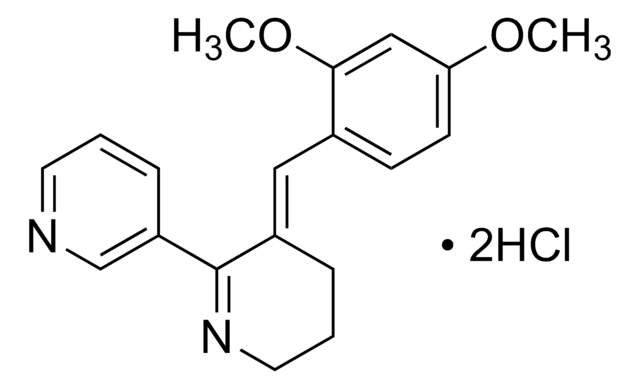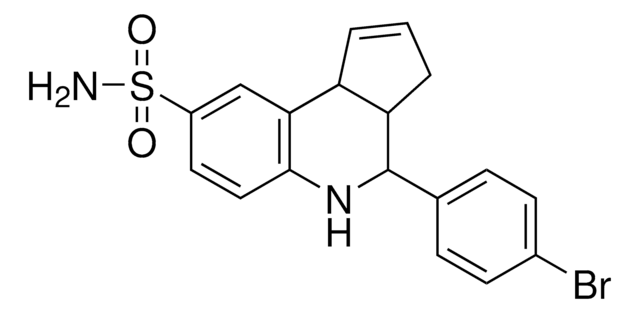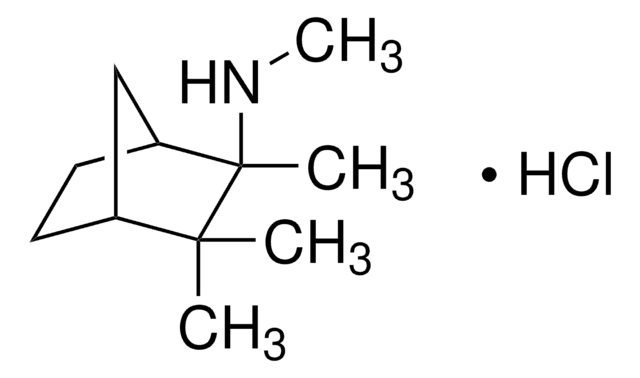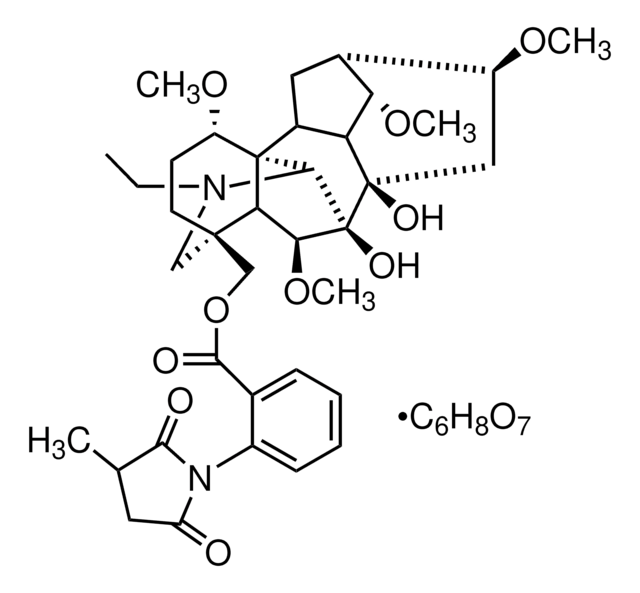SML0326
GTS-21
≥97% (HPLC)
Sinónimos:
3-(2,4-Dimethoxybenzylidene)-anabaseine dihydrochloride, DMBX-anabaseine, DMXB, DMXB-A, GTS21
About This Item
Productos recomendados
assay
≥97% (HPLC)
form
powder
color
faintly yellow to dark yellow
solubility
H2O: >5 mg/mL
storage temp.
2-8°C
SMILES string
Cl.Cl.COc1ccc(\C=C2/CCCN=C2c3cccnc3)c(OC)c1
InChI
1S/C19H20N2O2.2ClH/c1-22-17-8-7-14(18(12-17)23-2)11-15-5-4-10-21-19(15)16-6-3-9-20-13-16;;/h3,6-9,11-13H,4-5,10H2,1-2H3;2*1H/b15-11+;;
InChI key
BXKYFUGAAFLYJL-BXGYHSFXSA-N
Application
- as an α7 nicotinic acetylcholine receptors (nAChR) partial agonist to elucidate its anti-inflammatory effects in mouse macrophages
- to test its protective effect on the renal injury induced by lipopolysaccharide (LPS)
- to test its effect on microvascular inflammation in endotoxemia induced by LPS
Biochem/physiol Actions
Features and Benefits
Storage Class
11 - Combustible Solids
wgk_germany
WGK 3
flash_point_f
Not applicable
flash_point_c
Not applicable
Certificados de análisis (COA)
Busque Certificados de análisis (COA) introduciendo el número de lote del producto. Los números de lote se encuentran en la etiqueta del producto después de las palabras «Lot» o «Batch»
¿Ya tiene este producto?
Encuentre la documentación para los productos que ha comprado recientemente en la Biblioteca de documentos.
Nuestro equipo de científicos tiene experiencia en todas las áreas de investigación: Ciencias de la vida, Ciencia de los materiales, Síntesis química, Cromatografía, Analítica y muchas otras.
Póngase en contacto con el Servicio técnico







